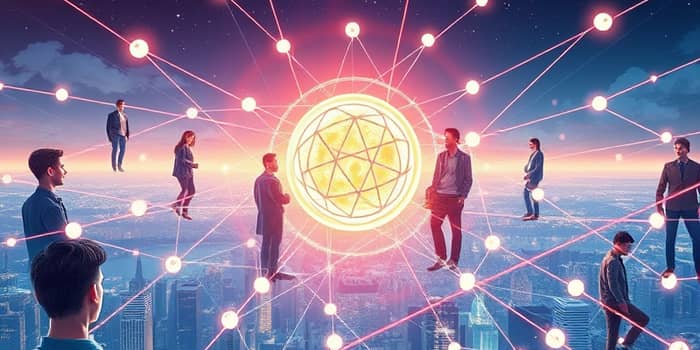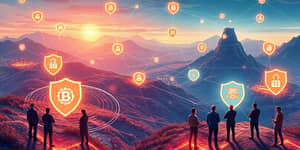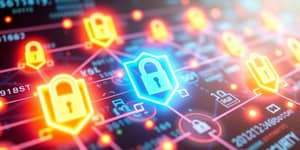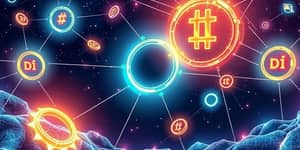
Decentralized Autonomous Organizations, or DAOs, are redefining how communities collaborate, decide, and allocate resources. By leveraging blockchain technology and smart contracts, DAOs empower individuals around the world to participate in transparent decision-making processes without centralized intermediaries.
A DAO is an entity governed by its members and operates without a central authority. Instead of CEOs or boards, a DAO uses smart contracts—self-executing code on a blockchain—to encode rules, automate operations, and ensure transparency.
The primary purpose of a DAO is to unite people around a shared mission, whether funding public goods, managing digital assets, or coordinating open-source projects. Members typically hold tokens that represent voting rights or shares, and proposals pass when they meet thresholds defined in code.
Key features include:
At their core, DAOs rely on blockchain technology—a distributed ledger that records every transaction immutably.
Smart contracts are the engines of a DAO. Once deployed, they execute actions automatically when conditions are met, eliminating manual intervention and reducing human error.
Tokens serve multiple roles: they represent ownership, grant voting power, and incentivize participation. Tokenomics designs often reward contributors with additional tokens, fostering ongoing engagement.
Voting mechanisms vary by design. Some DAOs use simple majority rules, while others require quorums or delegated voting, where members entrust their votes to representatives.
Governance structures define how decisions are proposed, discussed, and ratified. Common models include:
Examples of real-world DAOs showcase diverse approaches. ConstitutionDAO pooled funds to bid on a historical document. JuiceboxDAO focuses on funding public goods. ENS DAO manages the Ethereum Name Service through community ballots.
Underlying every DAO is a constitution or charter that outlines member rights, voting processes, and conflict-resolution mechanisms—akin to a social contract in digital form.
Launching a DAO requires thoughtful planning and community-building. Key steps include:
Several platforms simplify DAO creation and management:
Choosing the right tools can streamline governance, voting, and treasury management, allowing founders to focus on mission-driven growth.
DAOs span a wide array of fields, demonstrating the versatility of decentralized governance:
These applications showcase how DAOs unlock new forms of collaboration, enabling participants to align around shared values and goals without geographic or institutional barriers.
Despite their promise, DAOs face significant risks. Smart contract vulnerabilities can lead to exploits, as demonstrated by the 2016 hack of The DAO, which resulted in the loss of over $150 million in Ether.
Rigorous code audits, bug bounties, and upgradeable contract designs help mitigate technical risks. Yet even bulletproof code cannot prevent all attacks, so diversified treasury strategies and multi-signature wallets are often employed.
Legally, DAOs occupy a gray area. Without clear jurisdiction, liability questions linger. Some DAOs adopt legal wrappers—such as DAO LLCs or foundations—to provide member protection and regulatory compliance.
Understanding local and international regulations is vital for DAOs handling significant funds or operating in regulated sectors. Compliance measures may include KYC/AML protocols and tax reporting structures.
Historical milestones illustrate the rapid growth of DAOs:
• The DAO (2016): Raised over $150 million before a code vulnerability led to a high-profile hack.
• ConstitutionDAO (2021): Mobilized more than $40 million from thousands of contributors in a matter of days.
Leading platforms such as Aragon, DAOstack, and MolochDAO host thousands of active communities, collectively managing billions in treasuries.
Looking ahead, DAOs are poised to extend into real estate, supply chain management, and even social governance. As legal frameworks mature and tools become more accessible, we can expect:
• Greater regulatory clarity enabling mainstream adoption.
• Interoperable DAO networks that collaborate across ecosystems.
• Advanced governance models incorporating reputation, quadratic voting, and AI-assisted proposal evaluation.
By embracing decentralized, transparent, and community-driven governance, DAOs are charting a new course for organizations. Whether you aim to fund a creative project, govern a DeFi protocol, or steward an open-source initiative, the DAO framework offers a powerful toolkit for collective action.
Now is the time to explore, experiment, and help shape the next generation of organizational structures. Join the movement and discover how you can contribute to a future where communities govern themselves, guided by code, consensus, and shared purpose.
References













